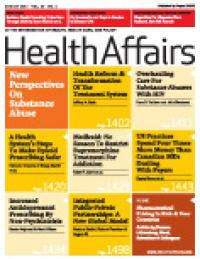Inexpensive infection control measures could save thousands of lives, billions of dollars

At any given time, one of every 20 hospital patients has a hospital-acquired infection, according to the U.S. Department of Health and Human Services.
This leads to an estimated 99,000 deaths in the U.S. each year and up to $33 billion in preventable health care costs.
Now a new study by University of North Carolina at Chapel Hill researchers finds that adopting an inexpensive set of infection control measures could potentially save many thousands of lives and billions of dollars. The study appears in the September 2011 issue of Health Affairs.
"These two initiatives, targeting ventilator associated pneumonias and central line associated bloodstream infections, involved simple steps that lead to dramatic reductions in not only the targeted infections, but also mortality and costs," said Bradford D. Harris, MD, who led the study while serving as an associate professor of anesthesiology and pediatrics in the UNC School of Medicine. He is now a medical officer at the U.S. Food and Drug Administration in Washington.
The study was conducted in the Pediatric Intensive Care Unit at North Carolina Children's Hospital, which is one of the five University of North Carolina Hospitals. The study tested three interventions aimed at preventing and reducing hospital acquired infections.
The first intervention was strict enforcement of standard hand hygiene practices on the unit. All health care workers are expected to wash their hands with soap and running water or an alcohol-based rub on entering and leaving a patient's room, before putting on and after removing gloves, and before and after any task that involves touching potentially contaminated surfaces or body fluids.
The second intervention was implementing a bundle of measures aimed at preventing ventilator-associated pneumonia. Examples included elevating the head of the patient's bed while the patient is receiving breathing assistance from a ventilator, giving the patient daily breaks from sedation and then -- while the patient was unsedated -- assessing whether or not the patient is ready to come off the ventilator, and providing daily oral care (teeth brushing, mouth washes, etc.) with a long-lasting antiseptic.
The final intervention was ensuring compliance with guidelines for the use and maintenance of central-line catheters. Examples included using sponges impregnated with an antiseptic, using catheters impregnated with antibiotics whenever possible, and performing two assessments per day of whether patients with central-line catheters still needed them.
Results of the study showed that patients admitted after these interventions were fully implemented got out of the hospital an average of two days earlier, their hospital stay cost about $12,000 less and the number of patient deaths were reduced by two percentage points.
The costs for implementing these measures were modest. Examples include roughly $21 a day for oral care kits and about 60 cents a day for antiseptic patches and hand sanitizers. But adoption of the three interventions collectively could save this single hospital unit an estimated $12 million a year, the study found. If replicated nationwide, these measures potentially could save thousands of lives and billions of dollars each year.
The study concluded that measures such as these have the potential to save both lives and money and will improve the care of all patients.














